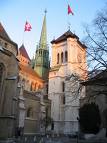Pierre Dufresne 1786 - 1837
June 06, 2009
 Pierre Dufresne 1786 - 1837 was a
French orthodox physician who converted to homeopathy, a Physician at a
Maison de Santé, he became the founder the Society Homeopathique
Gallicane, the founder of the Society Homoeopathique Lémanienne, and a
founder and editor of the _Bibliotheque Homeopathique de
Geneva__
_alongside Charles Gaspard
Peschier
and Comte Sebastien Gaeten Salvador Maxime Des
Guidi,
Pierre Dufresne 1786 - 1837 was a
French orthodox physician who converted to homeopathy, a Physician at a
Maison de Santé, he became the founder the Society Homeopathique
Gallicane, the founder of the Society Homoeopathique Lémanienne, and a
founder and editor of the _Bibliotheque Homeopathique de
Geneva__
_alongside Charles Gaspard
Peschier
and Comte Sebastien Gaeten Salvador Maxime Des
Guidi,
Pierre Dufresne delivered the Presidential address before the French Homeopathic Society when Samuel Hahnemann was welcomed to Paris, and he intruduced homeopathy into Switzerland.
Pierre Dufresne was one of the first homeopaths to use Anthracin, and Dufresne conducted a proving of Mandragora,
Pierre Dufresne converted to homeopathy when Comte Sebastien Gaeten Salvador Maxime Des Guidi cured two of his patients with homeopathy, and he became a student of Samuel Hahnemann, and a colleague of Henry Victor Malan, Charles Gaspard Peschier, Georg August Benjamin Schweikert.
Dufresne was a member of the Central Association of Homeopaths in Leipsig, alongside Albrecht, Baumann, Ernst von Brunnow, Jean Barthelemy Arles Dufour, Anton Fischer, Carl Franz, Gaumann, Gustav Wilhelm Gross, Comte Sebastien Gaeten Salvador Maxime Des Guidi, Carl Georg Christian Hartlaub, Frantz Hartmann, Carl Haubold, Hofrath, Kretschmar, Kruger Hansen, William Leaf, Johan Joseph Wilhelm Lux, Moritz Wilhelm Mueller, Georg August Heinrich Muhlenbein, Charles Gaspard Peschier, Frederick Hervey Foster Quin, Gottlieb Martin Wilhelm Ludwig Rau, Rohl, Mathias Roth, Ernst Ferdinand Rueckert, Rummel, John Ernst Stapf, Suffert, Timotheus Samuel Thorer, Karl Friedrich Gottfried Trinks, George Adolph Weber, Friedrich Wolf, Paul Wolf, and many others.
Pierre Dufresne practiced in Geneva from 1831.
The Chairman of the Society, Pierre Dufresne introduced Samuel Hahnemann’s speech, with these words:
Henry Victor Malan, in a letter to the British Journal, says:
“A gentleman of that town having received, with a parcel of books, the Organon of Samuel Hahnemann, unexpected and unasked for, handed it to Dr. Dufresne, who, struck with the many truths it contains, set to work, and at the beginning of 1831 raised the standard of Homeopathy at Geneva.
“He was a man of experience and talent who had studied much. The new and brilliant success of his practice soon awakened the attention of many, though the globules seemed very small; but there was so little quackery about the system that it met with much opposition and great prejudice.
“Dr. Dufresne, showing daily its efficacy and superiority over all previous systems, saw the opponents drop off one by one, and a large and increasing number of adherents flock around him. So he continued for many years.
“He was at the head of a Maison de Santé in the country, a large establishment, where he received deranged people, and was successful in his cure of a great number of cases treated by Homeopathy. This added to the fame of the doctrine.
“In 1833, he founded the Society Homeopathique Gallicane, for all countries where French is spoken, which met either at Lyon or Paris once a year. He also established at Geneva, the Society Homoeopathique Lémanienne, which met once in three months, in some town in Switzerland. He also established the Bibliothèque Homoeopathique, a periodical monthly magazine, the first book printed in French on Homoeopathy.
“All these exertions, added to an extensive and daily growing practice, hastened his death. He was seized with an acute bronchitis, which made rapid progress, as he was already suffering from an old asthmatic affection.
“He died August 18, 1837.
“In the Zeitung list of 1832 and the Frederick Hervey Foster Quin list of 1834 Dufresne is located at Geneva.
”Pierre Augustus Rapou says that Dufresne of Geneva had given, with full success, Anthracin for a malignant pustule in a man. He published detailed observations on the case in the sixth volume of his journal.
“Dr. Dufresne delivered the Presidential address before the French Homeopathic Society when Samuel Hahnemann was welcomed to Paris. (British Journal of Homeopathy, vol. 2, p. 26. Pierre Augustus Rapou vol. 2, pp. 187, 199.)
Of interest:
Edouard Dufresne, son of Pierre Dufresne,
Edouard Dufresne, settled in Geneva, where he became physician in the hospital of Plain Palais, which since that time (1845) has become a homeopathic hospital. Edouard Dufresne it was in turn, who induced his teacher, Jean Paul Tessier to study Homeopathy; what Jean Paul Tessier has accomplished is known to all.
Edouard Dufresne submitted cases and articles to various homeopathic publications.
L C Dufresne is mentioned as a homeopathic prover in 1833. In 1835, L C Dufresne MD wrote to Charles Gaspard Peschier.